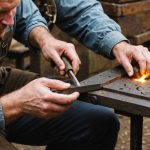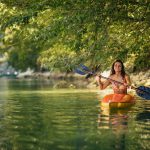Wildlife photography in the UK’s national parks offers an exciting and rewarding opportunity to capture the stunning diversity of animals and birds in their natural habitats. Whether you’re an aspiring wildlife photographer or an experienced professional, understanding the best practices will help you capture breathtaking images. Here, we dive into the essentials of wildlife photography, from choosing the right camera to mastering the art of light and shutter speed.
Choosing the Right Equipment
When it comes to wildlife photography, the equipment you use can make a significant difference in the quality of your images. One of the most critical decisions is selecting a camera and lens that suit your needs.
In parallel : What are the best strategies for attending the Edinburgh Military Tattoo with ease?
For starters, a telephoto lens is indispensable. This lens allows you to photograph animals from a distance without disturbing them. Telephoto lenses with a focal length of 300mm or more are ideal for capturing detailed shots of elusive species. Another essential piece of equipment is a macro lens, perfect for photographing small creatures and intricate details.
Choosing a camera with a fast shutter speed is also crucial. Wildlife can be unpredictable, making a fast shutter speed necessary to capture sharp images of moving subjects. Modern DSLR and mirrorless cameras with high frames per second (FPS) capability are excellent choices.
Also read : Essential steps for buying colosseum tickets in 2024
Don’t forget the camera settings. Shooting in RAW format gives you more flexibility in post-processing, allowing you to adjust the exposure and white balance without losing image quality. Additionally, using a low ISO setting will help minimize noise, especially in low light conditions.
Suggested Equipment:
- Camera: Full-frame DSLR or mirrorless camera
- Lenses: Telephoto lens (300mm+), macro lens
- Accessories: Tripod, remote shutter release, extra batteries
With the right equipment in hand, you’re well on your way to capturing stunning wildlife photographs.
Understanding Light and Timing
Lighting is a fundamental aspect of wildlife photography that can significantly impact the quality of your images. The best time to photograph wildlife is during the golden hours—early morning and late afternoon. During these times, the light is soft and warm, adding depth and dimension to your photographs.
In contrast, shooting in the harsh midday sun can create unwanted shadows and overexposed highlights. However, if you find yourself photographing wildlife at this time, look for shaded areas or use a polarizing filter to reduce glare.
Low light conditions, such as early morning or dusk, can present challenges. In these situations, a tripod and remote shutter release are invaluable tools. They help stabilize your camera, allowing for longer exposure times without blurring the image. Increasing the ISO setting can also help, but beware of added noise.
Tips for Managing Light:
- Golden Hours: Shoot during early morning or late afternoon
- Shaded Areas: Seek shade during harsh midday light
- Low Light: Use a tripod and remote shutter release, increase ISO cautiously
Mastering light and timing will enable you to capture the best wildlife images, showcasing the beauty and behavior of your subjects.
Getting Close to Your Subject
Getting close to your subject without disturbing it is crucial in wildlife photography. This requires patience, stealth, and a keen understanding of animal behavior. Studying your subject beforehand can provide valuable insights into their habits and movements.
Using a telephoto lens allows you to keep a respectful distance while still capturing close-up shots. Additionally, wearing camouflage clothing and moving slowly can help you avoid startling the animals.
One of the best practices is to visit nature reserves and national parks, where wildlife is accustomed to human presence. This increases your chances of getting closer to the animals without causing them stress.
Approaching Wildlife:
- Patience and Stealth: Move slowly and wear camouflage
- Telephoto Lens: Capture close-ups from a distance
- Nature Reserves: Visit areas where wildlife is used to humans
By respecting the wildlife and their habitats, you can obtain stunning photographs while ensuring the well-being of your subjects.
Composing the Perfect Shot
Composition is key in wildlife photography, transforming a simple photograph into a compelling image. Understanding the rules of composition will help you create balanced and visually appealing shots.
One of the fundamental techniques is the rule of thirds. Imagine dividing your frame into nine equal parts with two horizontal and two vertical lines. Placing your subject along these lines or at their intersections creates a more engaging composition.
Using a wide-angle lens can also add a sense of scale, capturing the surrounding environment and placing your subject within a broader context. This technique works especially well in landscape photography, where the scenery complements the wildlife.
Leading lines are another powerful tool. Natural lines, such as rivers, tree branches, or pathways, can guide the viewer’s eye towards the main subject, adding depth and interest to your images.
Composition Techniques:
- Rule of Thirds: Place subjects along grid lines
- Wide-Angle Lens: Capture the environment and add context
- Leading Lines: Use natural lines to draw attention
Mastering these composition techniques will help you create impactful and memorable wildlife photographs.
Essential Photography Tips
To excel in wildlife photography, there are several essential tips and tricks that can enhance your skills and improve your images.
First and foremost, practice is crucial. Regularly photographing wildlife sharpens your instincts and hones your technical skills. Spend time observing and photographing different species to understand their behavior and how to best capture them.
Patience is another key virtue. Wildlife photography often involves long hours of waiting, but the rewards are worth it when you finally get that perfect shot. Bring a comfortable chair, snacks, and plenty of water to make your wait more pleasant.
Understanding your camera and its settings is vital. Familiarize yourself with the different modes and features, such as aperture priority and manual mode. Experiment with different focal lengths and shutter speeds to see how they affect your images.
Lastly, keep an ethics in mind. Always prioritize the welfare of the animals and their habitats. Avoid disturbing nests or dens, and never feed or bait wildlife to get a better shot.
Essential Tips:
- Practice Regularly: Hone your skills and instincts
- Be Patient: Prepare for long waits
- Know Your Camera: Experiment with settings and modes
- Ethical Photography: Respect wildlife and their habitats
By following these essential tips, you will develop into a skilled wildlife photographer, capable of capturing the beauty and essence of nature.
Wildlife photography in the UK’s national parks presents a unique and rewarding challenge. By choosing the right equipment, understanding light and timing, getting close to your subjects, mastering composition, and following essential photography tips, you can capture stunning images of the diverse wildlife that these parks have to offer.
Remember, the key to successful wildlife photography lies in preparation, patience, and respect for nature. By following the best practices outlined in this article, you will enhance your skills and increase your chances of capturing those perfect shots that tell the story of the natural world. Whether you’re photographing a shy pine marten or a majestic bird in flight, these tips will help you create images that inspire and captivate your audience. Happy shooting!
















